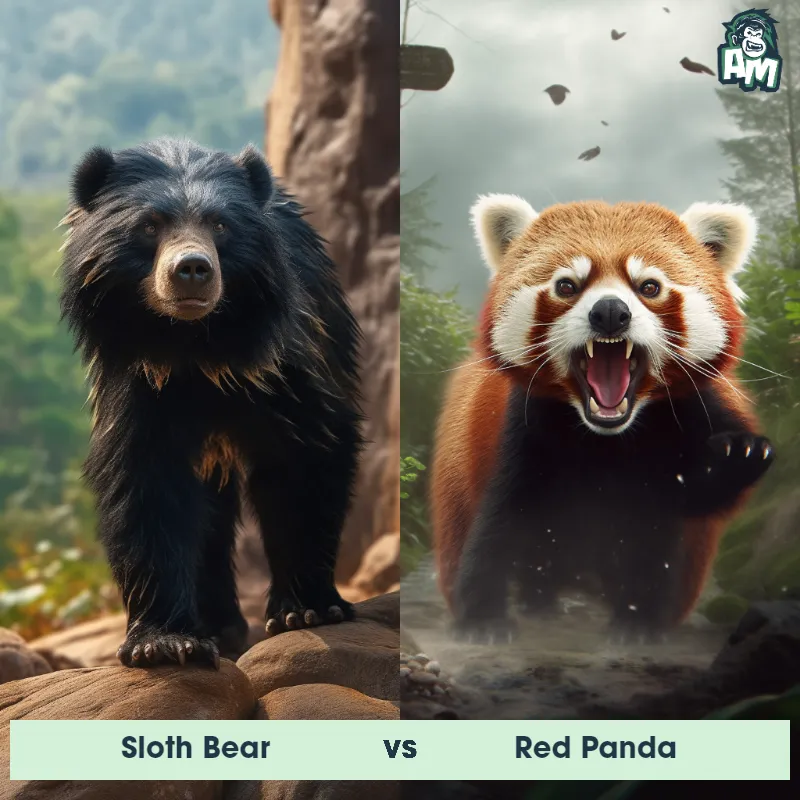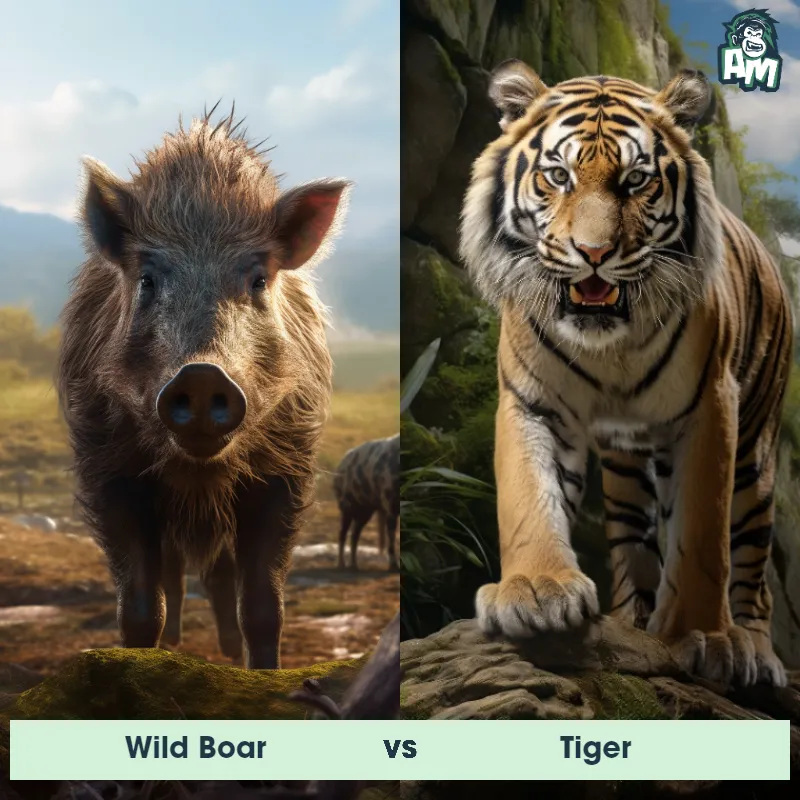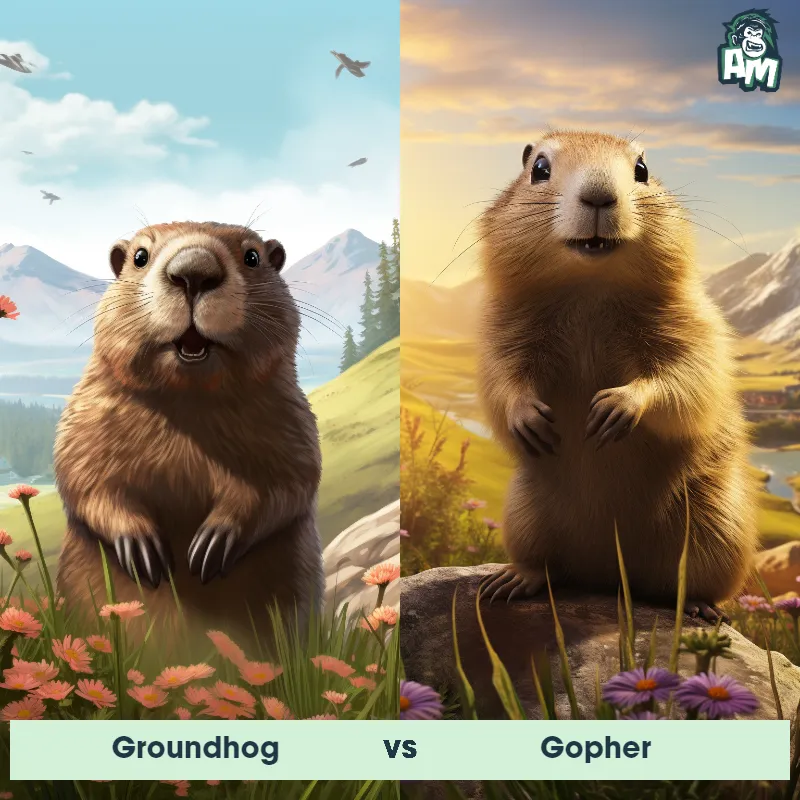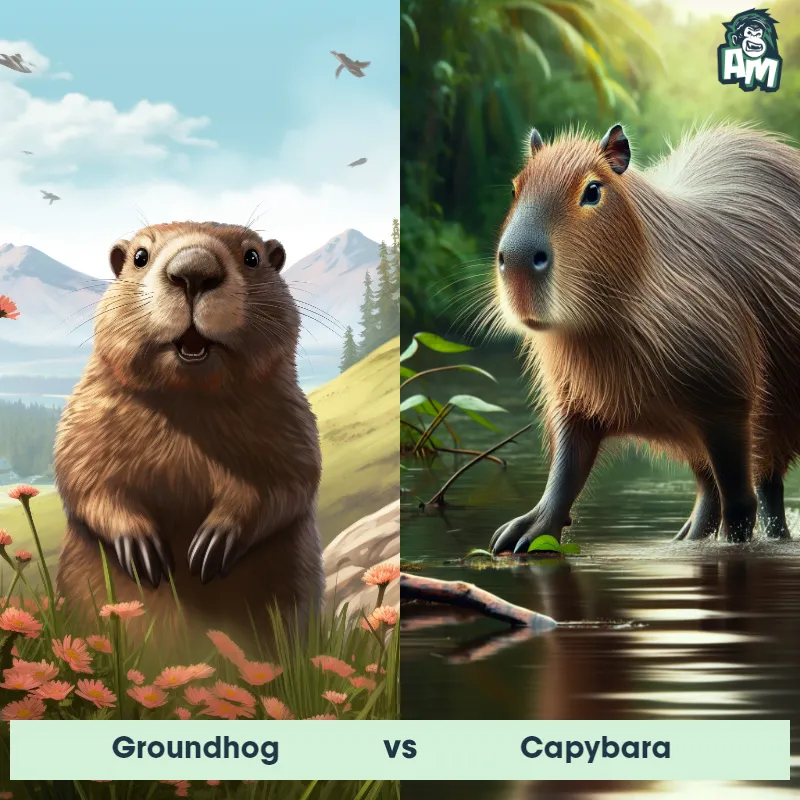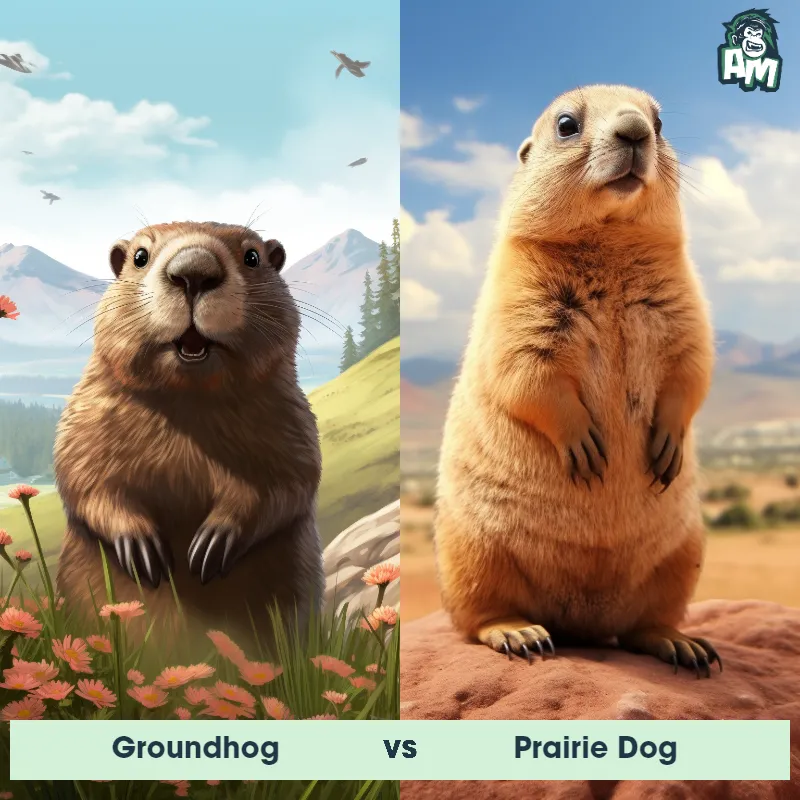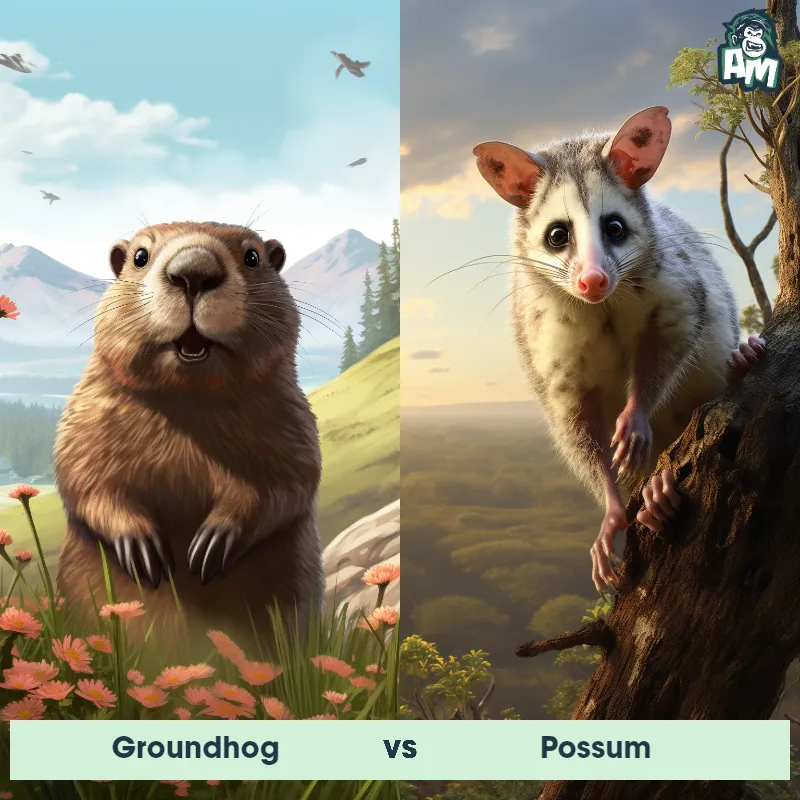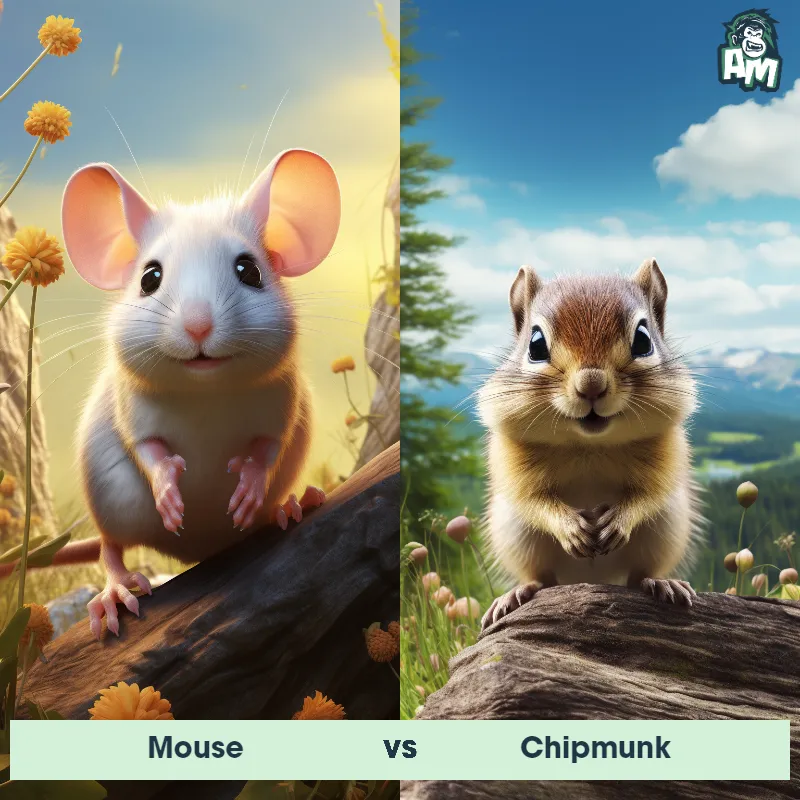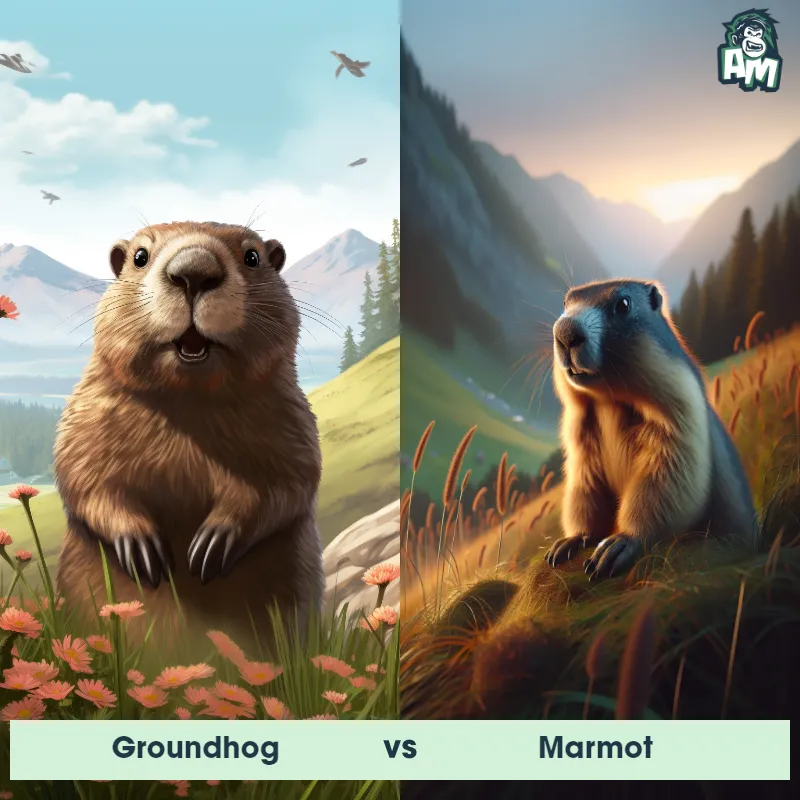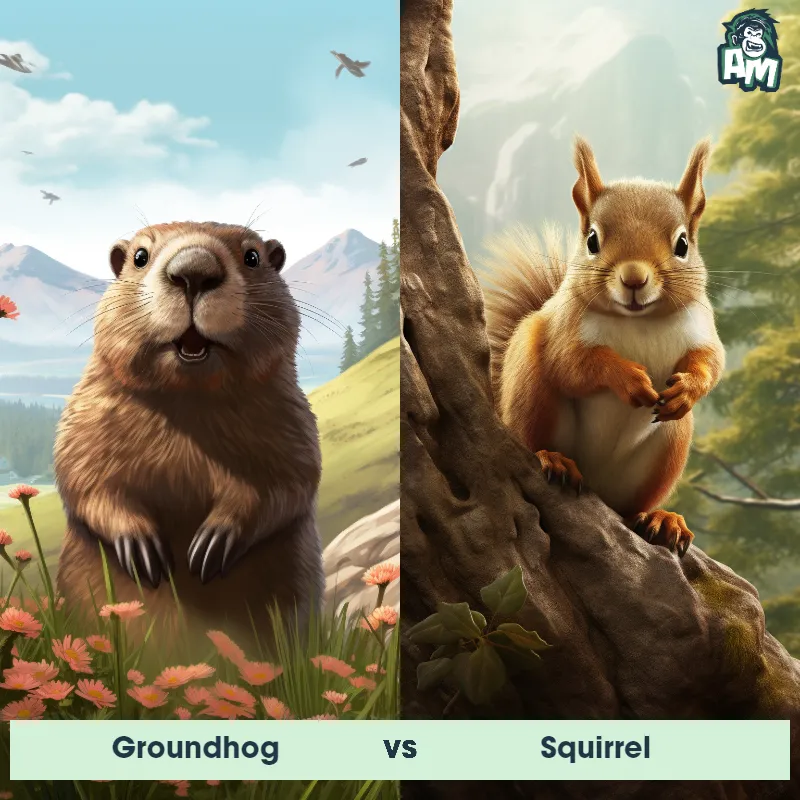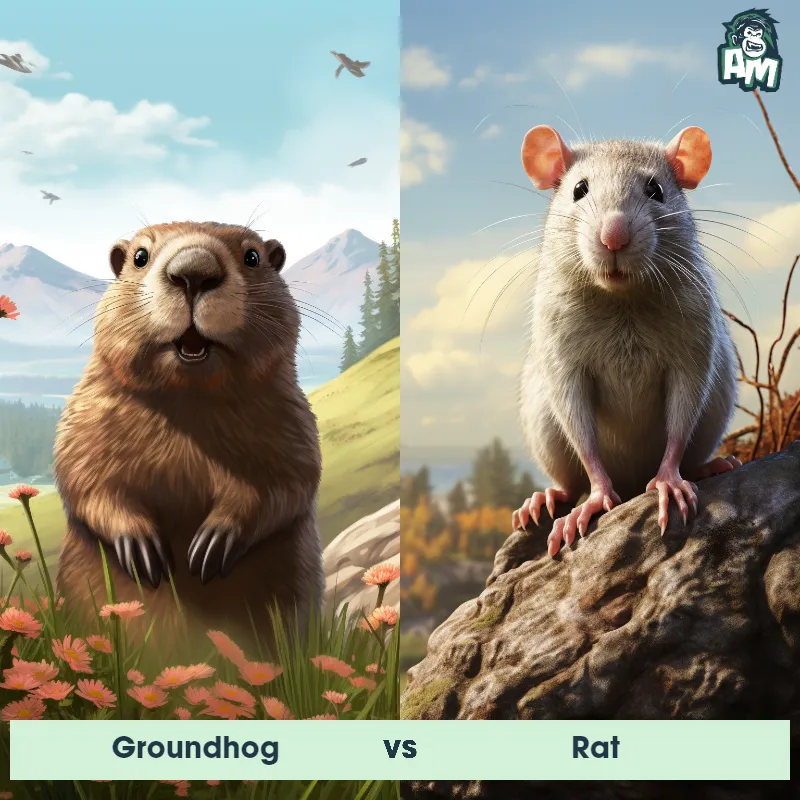Chipmunk vs MarmotSee Who Wins

Ladies and gentlemen, welcome to a thrilling showdown between two remarkable creatures of the wild! In the left corner, we have a sprightly and agile chipmunk, famous for its lightning-fast reflexes and nimble movements. And in the right corner, we have a formidable opponent, the marmot, known for its stout build and strong defensive skills. It's going to be a fierce battle, so let's dive into the action!
Contender 1: Chipmunk
Chipmunks are small, striped rodents known for their adorable appearance and cheek pouches used for storing food. Part of the squirrel family, they possess brown fur with dark and light stripes running down their backs and sides. They are very agile and fast, able to climb trees and walls with ease. Chipmunks are primarily ground dwellers and live in burrows, which are complex networks of tunnels and chambers.
Fun Fact: During the fall, chipmunks begin to gather food in their cheek pouches and bring it back to their burrows, creating a food cache that can help them survive through winter when they enter a state of torpor, similar to hibernation.
Contender 2: Marmot
The Marmot, also known as a groundhog or woodchuck, is a medium-sized rodent belonging to the squirrel family. It is characterized by its stout body, short legs, and bushy tail. Marmots have a short, coarse fur that can vary in color from brown to gray, depending on the species. They are well adapted to an underground lifestyle, with strong claws for digging burrows that can be up to 30 feet long. Marmots are social animals, living in colonies that consist of complex tunnel systems with separate chambers for nesting and hibernating. They are herbivores, feeding primarily on grasses, leaves, and flowers.
Fun Fact: Marmots are excellent diggers and can move up to a ton of soil when constructing their burrows.
Matchup Stats
| Chipmunk | Marmot | |
|---|---|---|
| Size | 4-7 inches (10-18 cm) | Up to 2 feet long (60 centimeters) |
| Weight | 1-5 ounces (28-142 grams) | Up to 13 pounds (6 kilograms) |
| Speed | 21mph (34km/h) | 20mph (32km/h) |
| Key Strength | Agility and Speed | Agility and ability to retreat into burrow |
| Biggest Weakness | Small Size | Relatively small size and lack of offensive weapons |
Current Votes
Chipmunk vs Marmot
See Who Wins
View More Matches
Looking For More?
Similar Matches
Scientific Stats
| Chipmunk | Marmot | |
|---|---|---|
| Scientific Name | Tamias | Marmota |
| Family | Sciuridae | Sciuridae |
| Habitat | Forests, Woodlands, Gardens, Parks | Mountains and meadows |
| Geography | North America, Asia | North America, Europe, Asia |
| Diet | Omnivorous (Nuts, Seeds, Fruits, Insects, Bird Eggs) | Herbivorous, primarily grasses, leaves, and flowers |
| Lifespan | 2 years - 8 years | 6 years - 10 years |
Key Differences between Chipmunk and Marmot
- Habitat: Chipmunks are commonly found in forested areas or woodland habitats, living among shrubs and trees, whereas Marmots prefer open grasslands, alpine meadows, or rocky areas, often at higher elevations.
- Facial Features: Chipmunks have distinctive facial stripes, extending from their eyes to the edge of their mouth, with a white stripe above and a dark stripe below their eyes. Marmots, on the other hand, have a more rounded face with small, round ears.
- Behavior: Chipmunks are highly agile and known for their quick movements and ability to climb trees. Marmots are ground-dwelling creatures with a more sedentary lifestyle, often digging extensive burrow systems for shelter and hibernation.
- Tail: Chipmunks possess a bushy, fluffy tail that is typically striped and often held upright, while Marmots have a thick, cylindrical tail with less hair, generally held horizontally.
- Size: Chipmunks are significantly smaller than Marmots, with an average length of 5-6 inches and weight of 1-5 ounces, while Marmots can reach up to 28 inches in length and weigh 13-18 pounds.
- Coloration: Chipmunks are characterized by a striped pattern, typically consisting of black and white stripes along their body, whereas Marmots have a more solid-colored fur, often displaying various shades of brown or gray.








